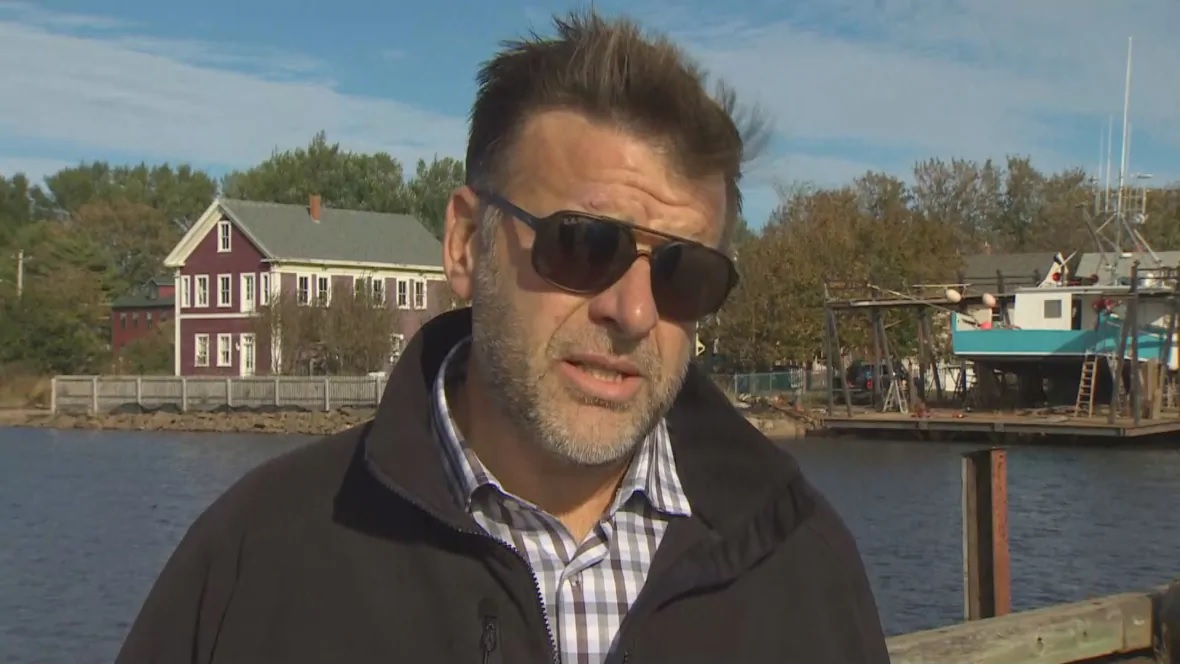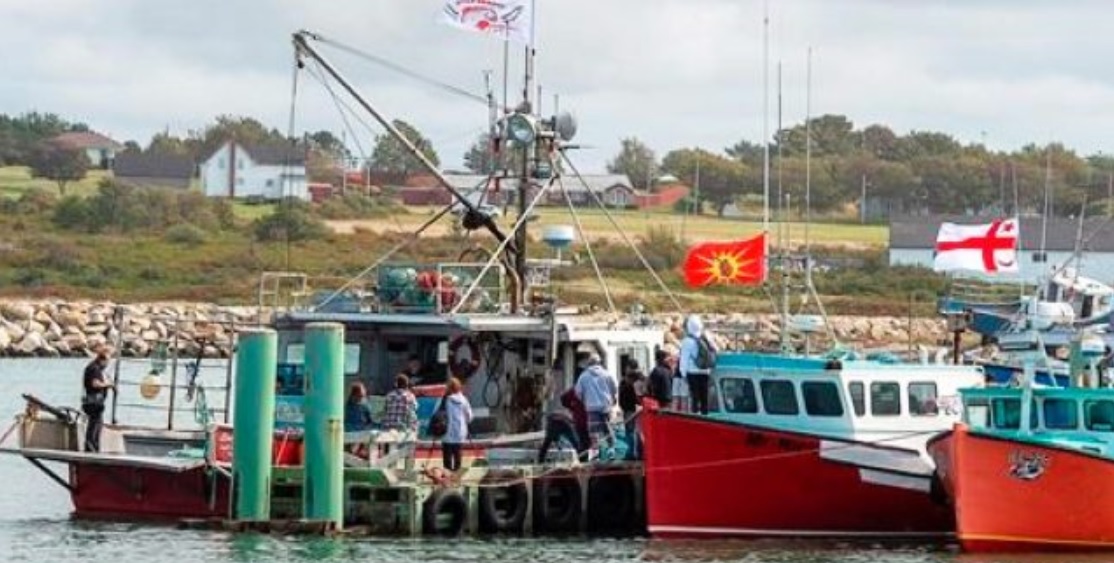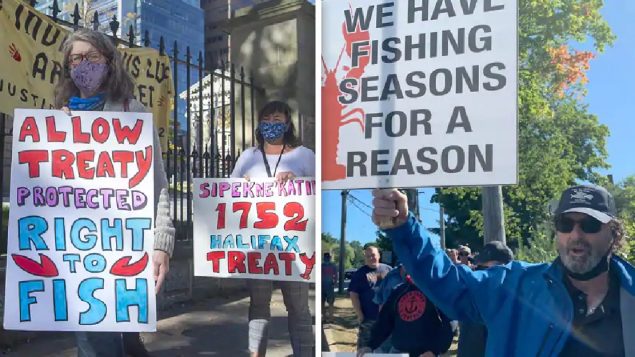In the ongoing dispute between Indigenous and commercial lobster fishers in east coast Nova Scotia, the federal government has appointed a mediator.
He is Alistair Surette, president and vice-chancellor of Université Sainte-Anne, a Francophone university in Pointe-de-l’Eglise, Nova Scotia, which is in the St.Mary’s Bay area. This is where the main tensions between the fishing groups is ongoing.
Those tensions have resulted in loud arguments, broken Indigenous equipment, and a suspicious fire which destroyed a building where Indigenous fishers were storing their catch.
- RCI: Sep 18/20: Lobster dispute between Indigenous and commercial fishers boils over, again
- RCI: Sep 22/20: Lobster dispute between Indigenous and commercial fishers still boils
The issue is that First Nations fishers are harvesting lobster during the federally regulated season which is currently closed for conservation reasons. They say they have a Treaty and Supreme Court proven right, although the Supreme Court of Canada also ruled that the right could be subject to federal or provincial rules if justified for conservation or other reasons.
Another point of contention is that the SCC said Indigenous fishers could make a ‘moderate livelihood” from fishing but did not define what that could mean.
While there are high tensions between the two sides, they both tend to lay blame on the federal government, Quoted in the Washington Post, Colin Sproule, president of the Bay of Fundy Inshore Fishermen’s Association said, “The problems in St. Mary’s Bay have been caused in Ottawa, not in our fishing communities in Nova Scotia.”

Colin Sproule, president of the Bay of Fundy Inshore Fishermen’s Association, says commercial fishers are ready to talk, but without Chief Sack, he wonders what can be accomplished by the mediator. Chief Sack says he may join after there is a settlement reached with the federal government (CBC)
The announcement on Friday by Fisheries Minister Bernadette Jordan and Carolyn Bennett, Minister of Crown-Indigenous Relations, said Surette will act as a neutral third party speaking with the Mi’kmaw representatives and commercial fishers with the objective of decreasing tensions and preventing further escalation of this conflict.”
The local Sipekne’katik Chief Mike Sack however said he viewed the announcement with ‘mixed feelings’. He is now engaged in ‘nation to nation’ talks with federal representatives on the issue and speaking with Surette would not be a priority.
Commercial fishers have said because this could threaten their own livelihood they need to be at those talks, a request that both Chief Sack and the federal government have dismissed.
Federal Indigenous Services Minister Mark Miller has said the Indigenous fishery is “infinitely small’. compared to the 900 fishers in the vast regulated Area 34, and at least one analyst has also said the small Indigenous fishery will have no effect upon the larger commercial fishery. Commercial fishers however say that statistics show there’s been a decline in catch in the bay of about 46 per cent over the last three years.

Mi’kmaw fishing boats at the Saulnierville wharf on St Mary’s Bay. While still few in number, commercial fishers claim fishing out of season will hurt the stocks, ( Andrew Vaughan- The Canadian Press)
Quoted in the Canadian Press, local fisher Gerald Leblanc said, “I know they’re saying, ‘We’re only taking one per cent of the stock,’ but they’re not saying the Indigenous fishers are taking it in a four-square-mile area of the bay”. He also wondered how large this Indigenous fishery might become during the regulated closed fishery and how that would affect the future of the stock.
Chief Sack said a federally funded study of the stock should be undertaken with Indigenous participation.
Douglas Sanderson, a law professor at the University of Toronto is quoted in the Washington Post saying “In addition to lobster, there’s other ocean resources and sectors where the moderate-livelihood standard is at play, so you can see quickly how it’s not just about how many lobsters can we take during this negotiated lobster season.”
The Chief of the Membertou First Nation in Cape Breton, Nova Scotia, has said they are also planning to launch their own self-regulated fishery outside federal control. Chief Terry Paul, quoted by the CBC said, “ “We are currently in the process of working on a moderate livelihood management plan. This will include input from you, our community members. Soon, we will be fishing for our own livelihood on our own terms”. He did offer a timetable for the move.
Another group in Cape Breton, the Potlotek First Nation has been conducting their own fishery since October 1, in St Peter’s Bay, and although there have been concerns from commercial fishers, there has so far not been the violent protests seen in St Mary’s Bay in southwestern Nova Scotia.
Starting in 2000, the previous Conservative federal government negotiated agreements with several First Nations bands and spent some $270 million to buy licences, boats, equipment and provide training for participation in the commercial fishery.
additional information-sources
- CBC: Oct 24/20: Ottawa names N.S. university president to rebuild trust between Mi’kmaw, commercial fishers
- Canadian Press (Global News): M Tutton: For Acadian fishermen, early Mi’kmaq fishery in N.S bay can never be respected
- CBC: T Grant: Oct 5/20: Sipekne’katik chief says discussions with commercial fishers in Nova Scotia can wait
- CBC: T.Ayers: Oct 23/20: Potlotek Chief says band losing patience with DFO over fishery
- Canadian Press (Ottawa Citizen): Oct 24/20: Feds appoint N.S. university president to help resolve Indigenous lobster dispute
- Washington Post: A Coletta: Oct 26/20: Indigenous people in Nova Scotia exercised their right to catch lobster, now they’re under attack
- CBC: Oct 20/20: Another N.S First Nation announces plan to launch self-regulated lobster fishery







For reasons beyond our control, and for an undetermined period of time, our comment section is now closed. However, our social networks remain open to your contributions.